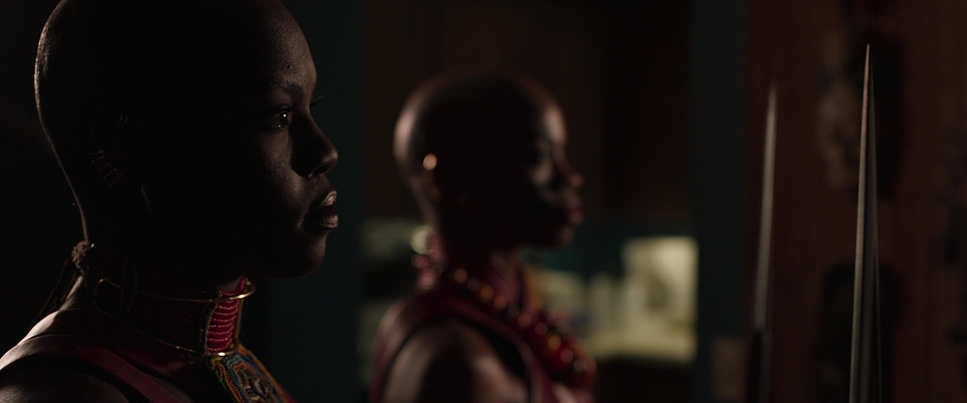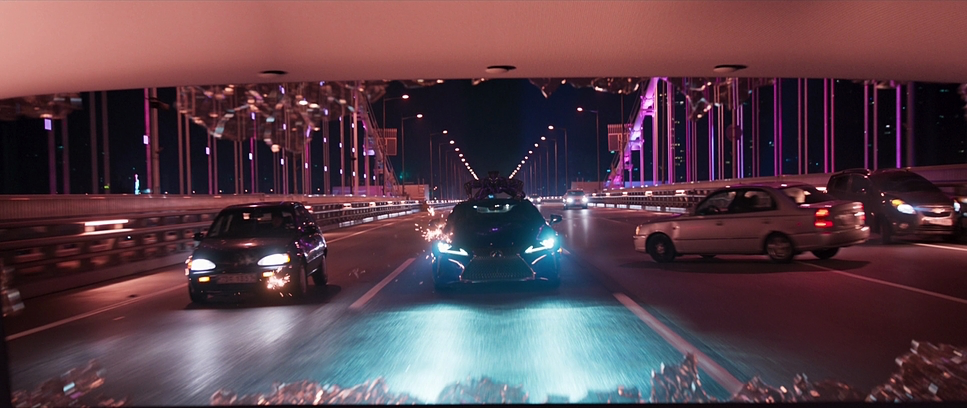I’m Salik Waquas, a film colorist and filmmaker with a deep passion for storytelling through visuals. I own a post-production color grading suite, where I specialize in enhancing the aesthetics of films, commercials, and music videos. My journey into the world of filmmaking started with a love for cinematography, which evolved into a career in color grading. Over the years, I’ve been privileged to work on a variety of projects that have allowed me to merge my technical expertise with creative storytelling.
In this article, I’ll explore the cinematography of Black Panther (2018), directed by Ryan Coogler and shot by the brilliant Rachel Morrison. With her groundbreaking techniques and unique vision, Morrison created a visual masterpiece that not only brought the world of Wakanda to life but also redefined representation in cinema.
Cinematography Analysis Of Black Panther (In Depth)
Inspiration for the Cinematography of Black Panther

Rachel Morrison, the first woman ever nominated for an Academy Award in cinematography, brought a fresh and bold approach to Black Panther. Her background in documentary filmmaking gave her the ability to create visuals that felt authentic and experiential. Partnering with Ryan Coogler, she seamlessly blended African cultural aesthetics with the futuristic world of Wakanda, encapsulating the essence of Afrofuturism.
🎬 A Note from Salik:
I often get asked how I achieve the dense, filmic look in my commercial work. The secret isn't just color grading—it's the starting point. I have finally released my personal Master LUT Pack—8 distinct looks based on real film.
These aren't simple presets; they were crafted using complex math, empirical data, and precise tetrahedral operations to ensure technical integrity. This is the exact collection I've built over the years and used on 200+ high-end commercials.
*Compatible with Davinci Resolve, Premiere Pro, and FCPX.

Morrison’s inspiration stemmed from both comic book visuals and the rich cultural heritage of Africa. The saturated color palettes, dynamic framing, and symbolic imagery were deeply rooted in themes of identity, colonialism, and globalism. Her deliberate lighting choices celebrated black skin tones, a revolutionary step in Hollywood cinematography. For me, this attention to detail and cultural significance set the film apart as a milestone in visual storytelling.
Camera Movements Used in Black Panther

One of the most captivating aspects of Black Panther is its dynamic camera work. Morrison and Coogler opted for a restrained approach, primarily using two cameras to maintain an intimate and personal feel. This decision contrasts with the multi-camera setups often employed in Marvel films, allowing the visuals to remain deliberate and story-driven.
The coronation scenes are a standout example of this technique. The smooth pans and tilts, paired with dynamic tracking shots, mirror the ceremonial rhythm of Wakanda’s traditions. The action sequences, such as the casino fight and the car chase in Busan, are another highlight. The camera’s sharp, quick movements immerse the audience in the chaos and tension, heightening the stakes for the characters.
A particularly striking moment is the rotating shot during T’Challa’s battle with Killmonger. This visual choice symbolizes the shifting power dynamics between the two characters, adding depth to the emotional and narrative tension of the scene.
Compositions in Black Panther

The compositions in Black Panther are rich with symbolism and cultural resonance. Morrison often places characters in positions that reflect their power, vulnerability, or emotional states. Wide-angle shots of Wakanda showcase its grandeur, while Dutch angles are sparingly used to emphasize disorientation and conflict, particularly in Killmonger’s scenes.
Symmetry plays a crucial role in the film’s visual storytelling. During council meetings, the balanced framing reflects the unity and order of Wakanda. In contrast, moments of discord are marked by broken symmetry, subtly mirroring the film’s internal and external conflicts.
Foreground and background elements interact seamlessly, adding layers of depth to the narrative. For instance, in the ancestral plane sequences, the framing captures both the emotional intimacy of T’Challa’s journey and the expansive spiritual connection to his ancestors.
Lighting Style of Black Panther

Lighting is where Black Panther truly breaks new ground. Historically, Hollywood has struggled to properly light darker skin tones, often favoring techniques optimized for white actors. Morrison reversed this trend by using high-contrast lighting and vibrant tones to showcase the beauty of the predominantly black cast.
The lighting in Wakanda is warm and vibrant, echoing the nation’s vitality and prosperity. In contrast, scenes set in Oakland or Killmonger’s flashbacks employ cooler, harsher lighting, reflecting alienation and struggle. This visual dichotomy enhances the narrative themes of identity and heritage.
One of my favorite sequences is the ancestral plane. The ethereal glow and surreal lighting create a dreamlike quality that connects the characters’ spiritual and emotional journeys. Morrison’s use of practical lighting in these scenes adds authenticity while enhancing their otherworldly aesthetic.
Lensing and Blocking in Black Panther

Morrison’s choice of lenses and meticulous blocking further elevate the film’s visual impact. Wide lenses are used to capture the grandeur of Wakandan landscapes and architecture, while longer lenses focus on intimate moments, drawing the audience closer to the characters’ emotional worlds.
Blocking in Black Panther is particularly noteworthy. For example, in the coronation fight between T’Challa and Killmonger, the characters’ shifting positions within the frame underscore the evolving power dynamics. Similarly, T’Challa is often framed in open, expansive spaces to symbolize his connection to Wakanda, while Killmonger is frequently isolated, reflecting his alienation.
These thoughtful choices enhance the film’s emotional depth and ensure that every movement and position within the frame carries narrative weight.
Color Grading of Black Panther

As a colorist, the grading of Black Panther is especially fascinating to me. The film’s palette is bold and unapologetically vibrant, reflecting the energy and culture of Wakanda. Colors like gold, purple, and green dominate the screen, creating a visual language that is both striking and meaningful.
The contrast between Wakanda and Oakland is another example of how color grading enhances storytelling. Wakanda’s warm, saturated tones emphasize its vitality, while Oakland’s muted palette underscores themes of struggle and disconnection.
The ancestral plane sequences are a masterclass in color grading. The glowing purple sky and soft, dreamlike tones create a space that feels both otherworldly and deeply connected to Wakandan tradition. This meticulous approach not only elevates the film’s aesthetic but also serves as a powerful cultural statement.
Conclusion
Black Panther is more than a superhero film; it’s a cultural landmark and a visual masterpiece. Rachel Morrison’s cinematography is integral to its success, blending African culture with futuristic elements to create a world that feels both authentic and extraordinary.
As a filmmaker and colorist, I find Black Panther profoundly inspiring. It demonstrates the power of visual storytelling to challenge conventions, celebrate diversity, and resonate deeply with audiences. Morrison’s innovative techniques and thoughtful choices serve as a reminder of the transformative potential of cinema, making Black Panther a benchmark in the art of filmmaking.
- Also Read: CINEMATOGRAPHY ANALYSIS OF BACK TO THE FUTURE (IN DEPTH)
- Also Read: CINEMATOGRAPHY ANALYSIS OF BABY DRIVER (IN DEPTH)
Browse Our Cinematography Analysis Glossary
Explore directors, cinematographers, cameras, lenses, lighting styles, genres, and the visual techniques that shape iconic films.
Explore Glossary →